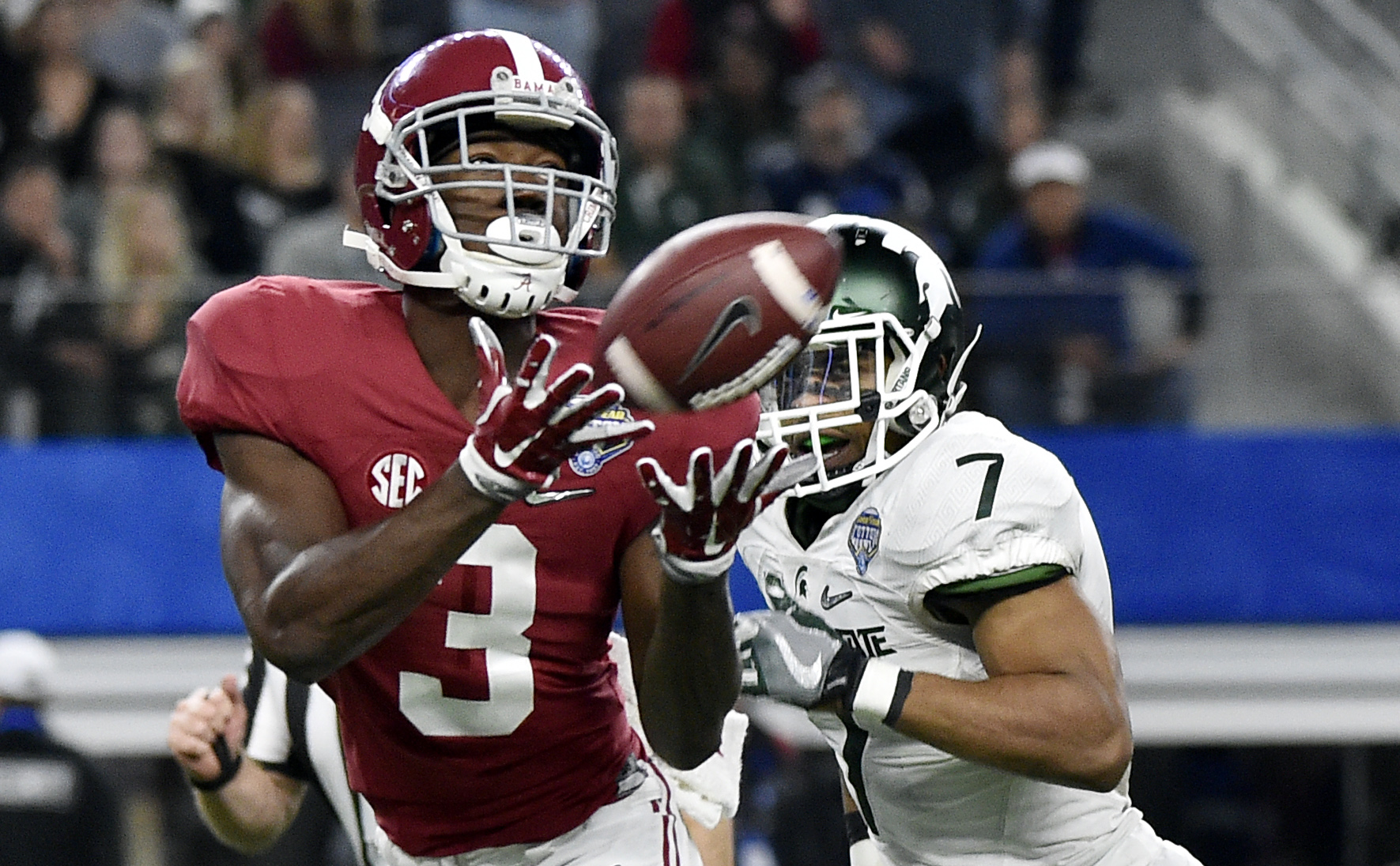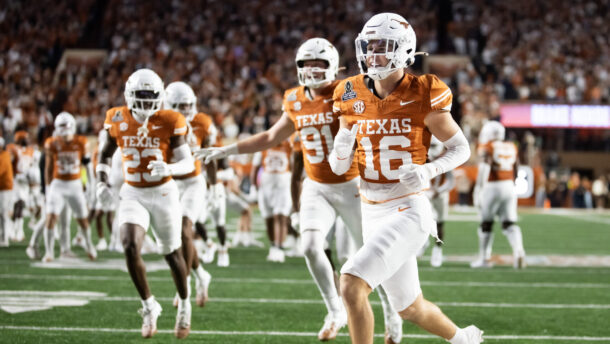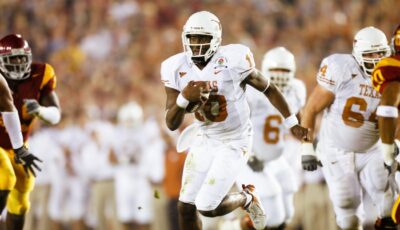
A lot of familiar names headline the best-of categories for SEC receivers entering 2016.
To be eligible, receivers had to catch at least 10 passes in 2015.
Here’s a look at the winners:
Smallest — Isaiah McKenzie, Georgia
McKenzie, just 5-8, 170 pounds, caught 10 balls for 123 yards last season. He might not retain the title next year, however. South Carolina redshirt freshman Jerad Washington is 5-8 and just 158 pounds, and Tennessee redshirt freshman Michael Lacey is 5-7, 173 pounds.
Biggest — Ricky Seals-Jones, Texas A&M
This contest isn’t open to tight ends, but Seals-Jones could look those guys in the eye as well. Seals-Jones is a huge, physical target at 6-5, 235 pounds. He caught 45 passes for 560 yards and four touchdowns last season as a third option in the Aggies’ passing attack.
Of course, he puts that size to good use in other phases, too.
https://vine.co/v/e2mZAiPAT7e
Jones might not hold onto his title, though. Missouri receiver Justin Smith is 6-7, 200 pounds. Smith will be a redshirt freshman this season.
Fastest — Speedy Noil, Texas A&M
This likely will be settled in the 2017 NFL Combine, when Noil goes head to head with LSU’s Travin Dural. Until then, Noil retains the title with a reported 4.4 40-yard dash.
Best hands — Calvin Ridley, Alabama
Ridley separated himself from the pack — and defenders — as a freshman, earning high marks for precise route running and willingness to block.
But job requirement No. 1 is catching the football, and Ridley flashed some of the best hands in the SEC in 2015 while leading the league with 89 catches.
Here are just a few examples.
https://vine.co/v/ibvIvJFqdxq
https://vine.co/v/i7mZb6TneLX
https://vine.co/v/MPFHmFpqzHW
Best possession receiver — Fred Ross, Mississippi State
Ross led the SEC with 6.8 catches per game in 2015.
The Bulldogs used him a lot in the screen game and on underneath routes, which limited his yards per catch to 11.44.
That total was 35th in the SEC — but it was just one spot lower than Calvin Ridley, who averaged 11.74 per catch.
https://vine.co/v/iaeMHTawpi9
Best deep threat — Travin Dural, LSU
Dural averaged 19.04 yards per catch last season, third-best in the SEC. The Tigers also used him in the jet sweep — an easier way to maximize his speed.
Here are just a couple of examples of his ability to get behind defenses:
https://vine.co/v/iB1AUgv2dbn
https://vine.co/v/eL3Xg10aKgW
Highest upside — Josh Reynolds, Texas A&M
Overshadowed by heralded teammate Christian Kirk, Reynolds is the more dangerous of the duo. He’s also substantially bigger, at 6-4, 190, which creates issues particularly in red-zone, jump-ball situations.
@CFB One-handed grab reception by Texas A&M Josh Reynolds vs Arkansas Odell Beckham like, sadly ruled out of bounds. pic.twitter.com/zLPJyInqMi
— Buz Ellis (@BuzEllis) September 27, 2015
Reynolds averaged 17.78 yards per catch last season. His size and speed will make him a coveted NFL prospect — even if Kirk produces more highlight-worthy plays in College Station.
Texas A&M WR Josh Reynolds needs 1 more TD rec to break the school single-season record (13) #LSUvsTAMU, 730pm, ESPN pic.twitter.com/ZD3N5KcDyy
— ESPN College Football (@ESPNCFB) November 27, 2014
Managing Editor
A 30-time APSE award-winning editor with previous stints at the Miami Herald, The Indianapolis Star and News & Observer, Executive Editor Chris Wright oversees editorial operations for Saturday Down South.







